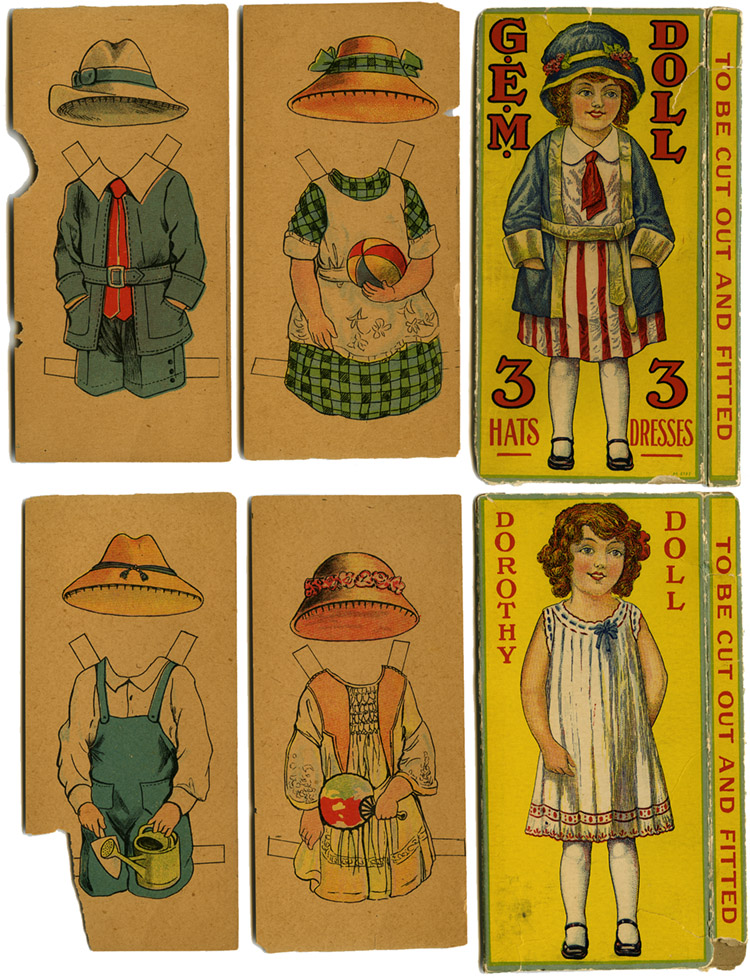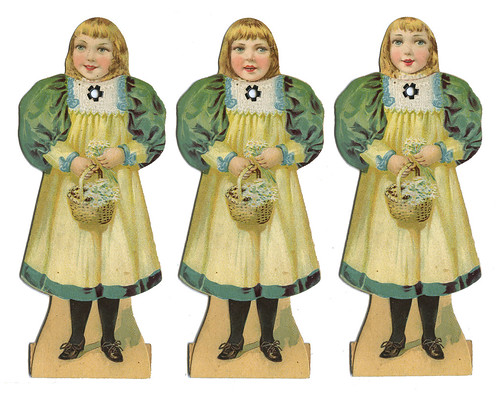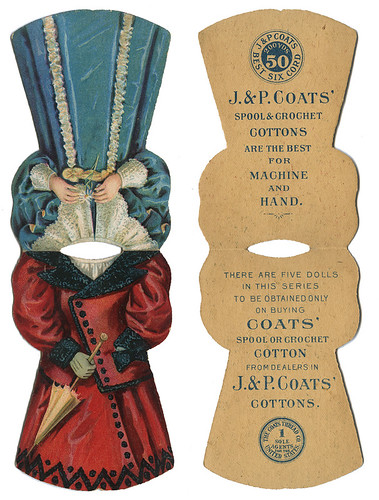Another repost, this one from January 2, 2010. The reason is that I've heard from someone related to the man who ran this company that I was curious about. The following was provided by reader Intense Guy:
It's a really small world. George E. Mousley was my (3x) Great Uncle. George was an importer of paper goods, Christmas stockings and novelties.
His brother, Charles, is my 3x grandfather.
George Edward Mousley (2 JUN 1862 - 17 AUG 1940) married Emma Louise Dakenwadel (26 APR 1866 - 21 OCT 1946). He had a shop at Fifth and Ranstead Street (the building is no longer there - it was removed when they created "Independence Mall," the home of the Liberty Bell. In fact, the building that houses the bell looks out across a lawn that was his store.
George moved out of the city (for the summers) when his daughter married a man named Seward around 1910. G.E.M. then had a store on the boardwalk in Wildwood, NJ (just south of Atlantic City.) It was at this time he started with publishing postcards. When he died, someone bought the business and moved it to Rhode Island - I know they made large posters of "Mickey Mantle" holding a bat for young boys to practice throwing pitches at/past.Thank you Intense Guy!
George's biggest claim to fame was the creation of the toy filled Christmas stocking - the doll's dress paper you show, may have been stuffed in such a stocking. He imported nearly all his merchandise.
...............................................
Okay ephemera people out there, specifically paperdoll people. I'm giving you a challenge. Actually what I'm doing is begging for help.
Below you will see the subject of my quandary. This little paperdoll is old and brittle. It came in a box I purchased on ebay years ago. The seller bought it from a fellow who bought it from an estate sale. It had once belonged to a librarian who paid $10 for it. Since it was just one of many paperdolls in the box it cost me about $4. The problem is I have never seen anything about these G.E.M. cut out dolls. Obviously the box/doll goes with only two of the outfits, the other two being for a boy. So this means there must have been a series of these dolls, both boys and girls, but I've found zip/nada/nothin'! Not one of the reference books shows this. I've found nothing online referencing these dolls.
So I'm throwing it out there onto the net in hopes I'll be able to pull back some sort of catch. Any ideas? Anyone?
Click on image to see it larger.
UPDATE: If you look at the comments section you'll find one from Lauren Sodano at the Strong National Museum of Play in Rochester, NY. She has provided the information that this doll was most likely published by the George E. Mousley Company that was located in Philadelphia. I did a little googling and can't find much about the company other than a few games that were produced in the late 1950s. I did however find a couple postcards that were published by a "George E. Mousley"in 1910 so perhaps that is how this company started. I also found a listing at Ancestory.com for a George E. Mousley in Philadelphia, but I'm not a member of the site so I can't dig any further.
So keep your eyes open for "G.E.M. BRAND", "Geo. E. Mousley" or "George E. Mousley" because sooner or later there must be something about this company and its origins.
And special thanks to Lauren Sodano of the Strong National Museum of Play for sending me this information.
UPDATE 2: This is really getting interesting because it looks like what we have here is some, shall we say, "cross pollination" in the paper toy world. Linda from The Paper Collector has put out a call about this doll and received the following from Peggy Ell:
Hi Linda,The doll's body is Janet from American Colortype, but her head is different, can't place it. The clothing is from Universal - see pgs 311 & 312 in Mary's 20th Century book.Peg
Indeed Peg is right on the mark. The clothing on pgs. 311 & 312 in Mary Young's 20th Century Paper Dolls guide do match these clothes attributed to the Universal Toy and Novelty Mfg. Co. And the doll body on the back of the box above does match the American Colortype doll Janet which is on pg. 12, but not the head.
So was there outright theft by one company using images from another company? It's pretty common to find dolls used over and over again by one particular company. There were several dolls on the market that were simply Shirley Temple without Shirley. Same clothing, but the dolls were changed. But, as I recall, this was generally done within in one company that owned the original art work. I've never seen parts of a set coming from so many directions.
The Universal Toy and Novelty Mfg. Co. was based in Chicago and one of the things they produced were baseball cards as can be seen here and here and pull-toys as shown here. And of course the paper dolls shown on pgs. 311-312 in Mary Young's guide.
So, how did all of these bits-and-pieces end up together in the hands of George E. Mousley in Philadelphia at G.E.M. Brand? The mystery gets more complex.
Let's see if any other information surfaces.






























